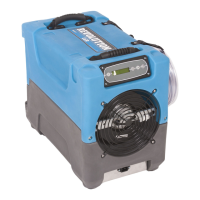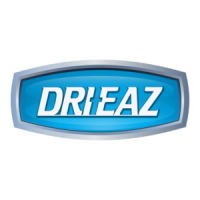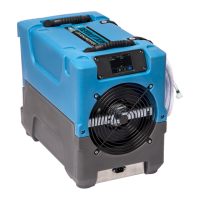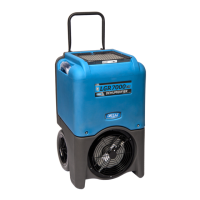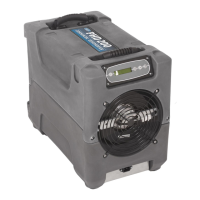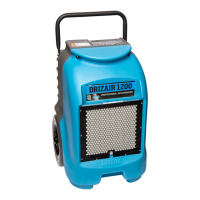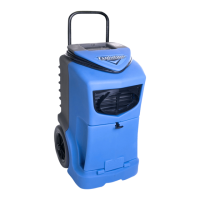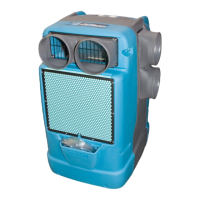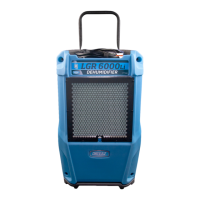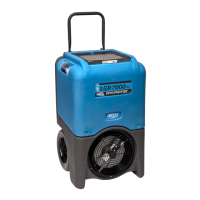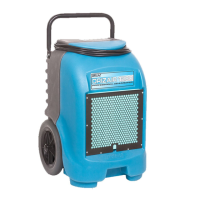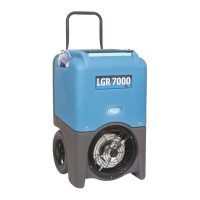07-01839G F413 1 Dri-Eaz Products, Inc.
Owner’s Manual
Revolution LGR Dehumidifier
Model F413
DRI-EAZ PRODUCTS, INC.
15180 Josh Wilson Road, Burlington, WA 98233
Phone: 800-932-3030 Fax: 360-757-7950 http://Revo.LegendBrandsRestoration.com
The Dri-Eaz
®
Revolution LGR Dehumidifier reduces humidity in enclosed environments by removing wa-
ter vapor from the air. The Revolution is ideal for water damage restoration, structural drying, construc-
tion, and many other applications requiring temporary, high-performance dehumidification.
Patents: http://www.LBpatents.com
SAVE THESE INSTRUCTIONS
Read and understand manual before operating.
SAFETY INSTRUCTIONS
WARNING! Do not alter or modify your unit in any
way. Use only replacement parts authorized by
Dri-Eaz Products, Inc. Modifications or use of unap-
proved parts could create a hazard and will void
your warranty. Contact your authorized distributor
for assistance.
WARNING! Electric shock hazard, rotating fan, hot
surface hazards. Unplug unit before opening cover
for cleaning or servicing. Unit must be grounded.
Inspect the power cord before use. If cord is dam-
aged, do not use. Always grasp the plug (not the
cord) to unplug.
Insert three-prong plug on power cord into a match-
ing electrically grounded outlet. Do not use adapter.
Never cut off third prong. Do not use an extension
cord.
The unit must be operated on a 115V/60Hz circuit
protected by a Ground Fault Circuit Interrupter
(GFCI) device.
Keep motor and wiring dry.
Do not attempt to repair the unit. For Authorized
Service Centers, contact Dri-Eaz.
BEFORE YOU BEGIN
Warranty registration
Visit warranty.LegendBrandsRestoration.com to register
your purchase. Registration allows us to better assist
you with using, maintaining or servicing your equipment
and to contact you in case we have important safety in-
formation concerning your Dri-Eaz product. If you deter-
mine service is required, have your equipment model,
serial number and original proof of purchase available
and call your distributor for assistance with obtaining a
return material authorization (RMA).
INTRODUCTION
The Revolution Dehumidifier reduces humidity in en-
closed structural environments by removing water vapor
from the air. With proper use, the Revolution can help to
dry out damp structural materials, insulation, and con-
tents, and maintain a healthy level of humidity. Using the
Revolution may also prevent secondary damage caused
by high humidity.
CORRECT PLUG REMOVAL
Grasp IEC plug and pull straight out
IMPORTANT: Damage to IEC receptacle or dehu-
midifier resulting from improper removal of the
power cord is not covered by warranty. The IEC
power cord is a wear item and is not covered by
warranty.
